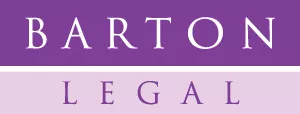During our webinar on 22 July 2021, we had the pleasure of hearing Richard Wilmot-Smith KC's "Pet Peeves of Counsel and Arbitrators". The topics discussed are relevant to most if not all arbitration proceedings, and we have summarised some of the key tips provided:
Have a Bird's Eye View
Too often it is the case that each party will have multiple people working on different aspects of the same matter. This can lead to cross over and duplication of facts, which may come to bite in the production of pleadings and other documents. It is important that there is at least one person at all times who has a bird's-eye view of the tests to be proven, your arguments, the facts, and documentation. In implementing this strategy, not only can you utilise your team effectively, but you will stand a much better chance of putting forward a coherent and persuasive argument for the arbitrator(s).
Effective Bundling
Documentation during the lifetime of a case can often be extensive and difficult to manage. When compiling bundles for judges, and even for counsel, it can be very tempting to include everything in your possession. This does not make for an effective bundle, and can often muddle or even contradict the facts you wish to present. Richard Wilmot-Smith KC suggested that the most effective bundle should fit into a briefcase. He highlighted that arbitrators are far more likely, not only to read the bundle provided, but also digest it, when the bundle has been condensed into the key documents/facts. Kim Franklin KC had a similar view, and has previously adopted the concept of a "handbag" bundle. Whilst the examples are perhaps comical, the principles are valid. Good bundles are those that are well structured and provide only key documents, to which the legal arguments relate.
Communication Between Parties
Often in court-based litigation proceedings, disagreements arise between parties on procedural issues, whether that be disclosure, issuance of notices/forms, or deadlines for submissions. Tensions can arise between parties without good reason. For example, a request for an extension of time; as long as the request is reasonable, it will likely be granted by the Court regardless, and provoking the other party therefore serves little or no purpose, other than damaging relations. Whilst the procedure is not quite as strict in arbitration, the same situations often occur. Good communications between parties allow for smoother proceedings and ultimately create less paperwork, making the facts of the case clearer and more distinctive, rather than detracting from the issues at hand.
Structure of Pleadings
It can be too tempting to create pleadings which follow a narrative of events. Whilst important to encapsulate a full picture of events, drafting in this manner can detract from the issues and legal arguments you seek to prove. A helpful tip provided by Richard Wilmot-Smith KC is the implementation of a "roadmap" at the beginning of larger pleadings. This is essentially an introductory short summary of each of the main points which your client seeks to rely upon. This will focus the mind of the reader and provide greater attention to the more important facts and points of legal argument.
This topic was discussed in our webinar 'Pet Peeves of Counsel and Arbitrators with Richard Wilmot-Smith KC of 39 Essex Chambers and Construction Arbitration in the MENA Region with Yonsoo Kim of Yoon & Yang in July 2021.
Click here to view the webinar and presentation.
The content of this article is intended to provide a general guide to the subject matter. Specialist advice should be sought about your specific circumstances.


